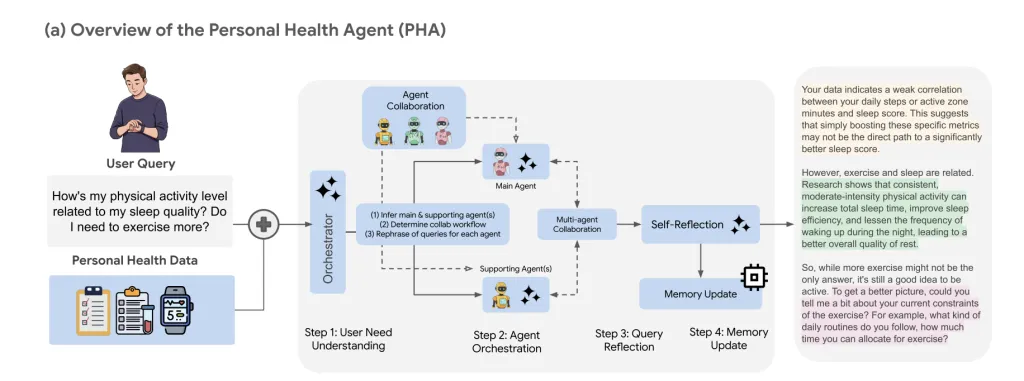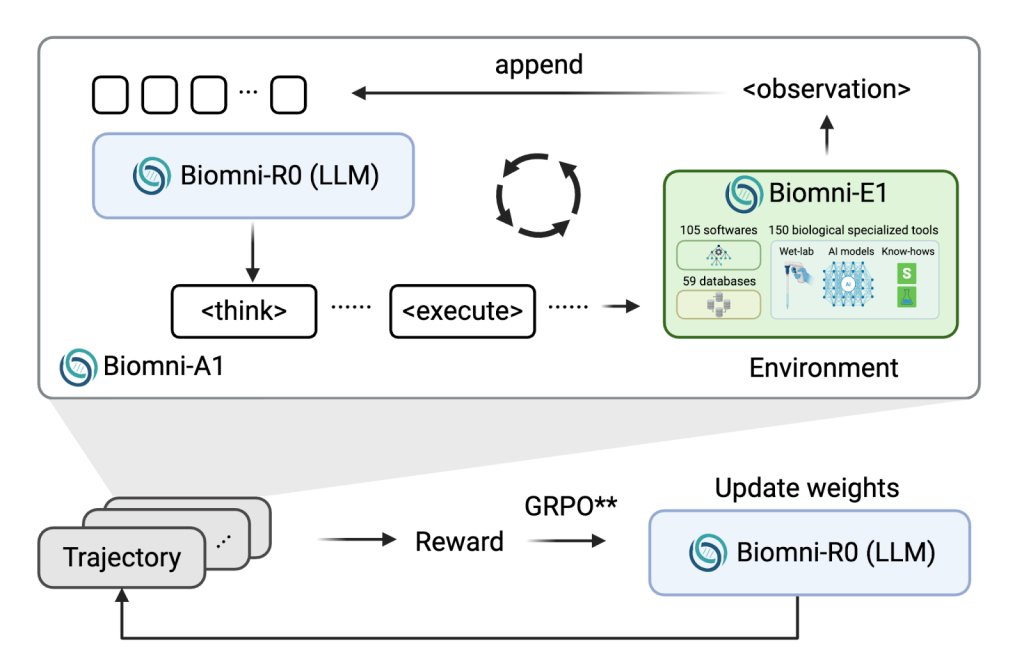How to Build a Complete End-to-End NLP Pipeline with Gensim: Topic Modeling, Word Embeddings, Semantic Search, and Advanced Text Analysis
In this tutorial, we present a complete end-to-end Natural Language Processing (NLP) pipeline built with Gensim and supporting libraries, designed to run seamlessly in Google Colab. It integrates multiple core techniques in modern NLP, including preprocessing, topic modeling with Latent Dirichlet Allocation (LDA), word embeddings with Word2Vec, TF-IDF-based similarity analysis, and semantic search. The pipeline not only demonstrates how to train and evaluate these models but also showcases practical visualizations, advanced topic analysis, and document classification workflows. By combining statistical methods with machine learning approaches, the tutorial provides a comprehensive framework for understanding and experimenting with text data at scale. Check out the FULL CODES here. Copy CodeCopiedUse a different Browser !pip install –upgrade scipy==1.11.4 !pip install gensim==4.3.2 nltk wordcloud matplotlib seaborn pandas numpy scikit-learn !pip install –upgrade setuptools print(“Please restart runtime after installation!”) print(“Go to Runtime > Restart runtime, then run the next cell”) import numpy as np import pandas as pd import matplotlib.pyplot as plt import seaborn as sns from wordcloud import WordCloud import warnings warnings.filterwarnings(‘ignore’) from gensim import corpora, models, similarities from gensim.models import Word2Vec, LdaModel, TfidfModel, CoherenceModel from gensim.parsing.preprocessing import preprocess_string, strip_tags, strip_punctuation, strip_multiple_whitespaces, strip_numeric, remove_stopwords, strip_short import nltk nltk.download(‘punkt’, quiet=True) nltk.download(‘stopwords’, quiet=True) from nltk.corpus import stopwords from nltk.tokenize import word_tokenize We install and upgrade the necessary libraries, such as SciPy, Gensim, NLTK, and visualization tools, to ensure compatibility. We then import all required modules for preprocessing, modeling, and analysis. We also download NLTK resources to tokenize and handle stopwords efficiently, thereby setting up the environment for our NLP pipeline. Check out the FULL CODES here. Copy CodeCopiedUse a different Browser class AdvancedGensimPipeline: def __init__(self): self.dictionary = None self.corpus = None self.lda_model = None self.word2vec_model = None self.tfidf_model = None self.similarity_index = None self.processed_docs = None def create_sample_corpus(self): “””Create a diverse sample corpus for demonstration””” documents = [ “Data science combines statistics, programming, and domain expertise to extract insights”, “Big data analytics helps organizations make data-driven decisions at scale”, “Cloud computing provides scalable infrastructure for modern applications and services”, “Cybersecurity protects digital systems from threats and unauthorized access attempts”, “Software engineering practices ensure reliable and maintainable code development”, “Database management systems store and organize large amounts of structured information”, “Python programming language is widely used for data analysis and machine learning”, “Statistical modeling helps identify patterns and relationships in complex datasets”, “Cross-validation techniques ensure robust model performance evaluation and selection”, “Recommendation systems suggest relevant items based on user preferences and behavior”, “Text mining extracts valuable insights from unstructured textual data sources”, “Image classification assigns predefined categories to visual content automatically”, “Reinforcement learning trains agents through interaction with dynamic environments” ] return documents def preprocess_documents(self, documents): “””Advanced document preprocessing using Gensim filters””” print(“Preprocessing documents…”) CUSTOM_FILTERS = [ strip_tags, strip_punctuation, strip_multiple_whitespaces, strip_numeric, remove_stopwords, strip_short, lambda x: x.lower() ] processed_docs = [] for doc in documents: processed = preprocess_string(doc, CUSTOM_FILTERS) stop_words = set(stopwords.words(‘english’)) processed = [word for word in processed if word not in stop_words and len(word) > 2] processed_docs.append(processed) self.processed_docs = processed_docs print(f”Processed {len(processed_docs)} documents”) return processed_docs def create_dictionary_and_corpus(self): “””Create Gensim dictionary and corpus””” print(“Creating dictionary and corpus…”) self.dictionary = corpora.Dictionary(self.processed_docs) self.dictionary.filter_extremes(no_below=2, no_above=0.8) self.corpus = [self.dictionary.doc2bow(doc) for doc in self.processed_docs] print(f”Dictionary size: {len(self.dictionary)}”) print(f”Corpus size: {len(self.corpus)}”) def train_word2vec_model(self): “””Train Word2Vec model for word embeddings””” print(“Training Word2Vec model…”) self.word2vec_model = Word2Vec( sentences=self.processed_docs, vector_size=100, window=5, min_count=2, workers=4, epochs=50 ) print(“Word2Vec model trained successfully”) def analyze_word_similarities(self): “””Analyze word similarities using Word2Vec””” print(“n=== Word2Vec Similarity Analysis ===”) test_words = [‘machine’, ‘data’, ‘learning’, ‘computer’] for word in test_words: if word in self.word2vec_model.wv: similar_words = self.word2vec_model.wv.most_similar(word, topn=3) print(f”Words similar to ‘{word}’: {similar_words}”) try: if all(w in self.word2vec_model.wv for w in [‘machine’, ‘computer’, ‘data’]): analogy = self.word2vec_model.wv.most_similar( positive=[‘computer’, ‘data’], negative=[‘machine’], topn=1 ) print(f”Analogy result: {analogy}”) except: print(“Not enough vocabulary for complex analogies”) def train_lda_model(self, num_topics=5): “””Train LDA topic model””” print(f”Training LDA model with {num_topics} topics…”) self.lda_model = LdaModel( corpus=self.corpus, id2word=self.dictionary, num_topics=num_topics, random_state=42, passes=10, alpha=’auto’, per_word_topics=True, eval_every=None ) print(“LDA model trained successfully”) def evaluate_topic_coherence(self): “””Evaluate topic model coherence””” print(“Evaluating topic coherence…”) coherence_model = CoherenceModel( model=self.lda_model, texts=self.processed_docs, dictionary=self.dictionary, coherence=’c_v’ ) coherence_score = coherence_model.get_coherence() print(f”Topic Coherence Score: {coherence_score:.4f}”) return coherence_score def display_topics(self): “””Display discovered topics””” print(“n=== Discovered Topics ===”) topics = self.lda_model.print_topics(num_words=8) for idx, topic in enumerate(topics): print(f”Topic {idx}: {topic[1]}”) def create_tfidf_model(self): “””Create TF-IDF model for document similarity””” print(“Creating TF-IDF model…”) self.tfidf_model = TfidfModel(self.corpus) corpus_tfidf = self.tfidf_model[self.corpus] self.similarity_index = similarities.MatrixSimilarity(corpus_tfidf) print(“TF-IDF model and similarity index created”) def find_similar_documents(self, query_doc_idx=0): “””Find documents similar to a query document””” print(f”n=== Document Similarity Analysis ===”) query_doc_tfidf = self.tfidf_model[self.corpus[query_doc_idx]] similarities_scores = self.similarity_index[query_doc_tfidf] sorted_similarities = sorted(enumerate(similarities_scores), key=lambda x: x[1], reverse=True) print(f”Documents most similar to document {query_doc_idx}:”) for doc_idx, similarity in sorted_similarities[:5]: print(f”Doc {doc_idx}: {similarity:.4f}”) def visualize_topics(self): “””Create visualizations for topic analysis””” print(“Creating topic visualizations…”) doc_topic_matrix = [] for doc_bow in self.corpus: doc_topics = dict(self.lda_model.get_document_topics(doc_bow, minimum_probability=0)) topic_vec = [doc_topics.get(i, 0) for i in range(self.lda_model.num_topics)] doc_topic_matrix.append(topic_vec) doc_topic_df = pd.DataFrame(doc_topic_matrix, columns=[f’Topic_{i}’ for i in range(self.lda_model.num_topics)]) plt.figure(figsize=(12, 8)) sns.heatmap(doc_topic_df.T, annot=True, cmap=’Blues’, fmt=’.2f’) plt.title(‘Document-Topic Distribution Heatmap’) plt.xlabel(‘Documents’) plt.ylabel(‘Topics’) plt.tight_layout() plt.show() fig, axes = plt.subplots(2, 3, figsize=(15, 10)) axes = axes.flatten() for topic_id in range(min(6, self.lda_model.num_topics)): topic_words = dict(self.lda_model.show_topic(topic_id, topn=20)) wordcloud = WordCloud( width=300, height=200, background_color=’white’, colormap=’viridis’ ).generate_from_frequencies(topic_words) axes[topic_id].imshow(wordcloud, interpolation=’bilinear’) axes[topic_id].set_title(f’Topic {topic_id}’) axes[topic_id].axis(‘off’) for i in range(self.lda_model.num_topics, 6): axes[i].axis(‘off’) plt.tight_layout() plt.show() def advanced_topic_analysis(self): “””Perform advanced topic analysis””” print(“n=== Advanced Topic Analysis ===”) topic_distributions = [] for i, doc_bow in enumerate(self.corpus): doc_topics = self.lda_model.get_document_topics(doc_bow) dominant_topic = max(doc_topics, key=lambda x: x[1]) if doc_topics else (0, 0) topic_distributions.append({ ‘doc_id’: i, ‘dominant_topic’: dominant_topic[0], ‘topic_probability’: dominant_topic[1] }) topic_df = pd.DataFrame(topic_distributions) plt.figure(figsize=(10, 6)) topic_counts = topic_df[‘dominant_topic’].value_counts().sort_index() plt.bar(range(len(topic_counts)), topic_counts.values) plt.xlabel(‘Topic ID’) plt.ylabel(‘Number of Documents’) plt.title(‘Distribution of Dominant Topics Across Documents’) plt.xticks(range(len(topic_counts)), [f’Topic {i}’ for i in topic_counts.index]) plt.show() return topic_df def document_classification_demo(self, new_document): “””Classify a new document using trained models””” print(f”n=== Document Classification Demo ===”) print(f”Classifying: ‘{new_document[:50]}…'”) processed_new = preprocess_string(new_document, [ strip_tags, strip_punctuation, strip_multiple_whitespaces, strip_numeric, remove_stopwords, strip_short, lambda x: x.lower() ]) new_doc_bow = self.dictionary.doc2bow(processed_new) doc_topics = self.lda_model.get_document_topics(new_doc_bow) print(“Topic probabilities:”) for topic_id, prob in doc_topics: print(f” Topic {topic_id}: {prob:.4f}”) new_doc_tfidf = self.tfidf_model[new_doc_bow] similarities_scores = self.similarity_index[new_doc_tfidf] most_similar = np.argmax(similarities_scores) print(f”Most similar document: {most_similar} (similarity: {similarities_scores[most_similar]:.4f})”) return doc_topics, most_similar def run_complete_pipeline(self): “””Execute the complete NLP pipeline””” print(“=== Advanced Gensim NLP Pipeline



